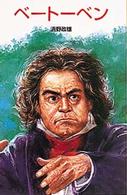- ホーム
- > 洋書
- > 英文書
- > Science / Mathematics
Full Description
Mechanical Vibrationcomprehensively addresses the fundamental principles of vibration theory, emphasizing its application in solving practical engineering problems. The authors focus on strengthening engineers' command of mathematics as a cornerstone for understanding vibration, control, and the ways in which uncertainties affect analysis. It provides a detailed exploration and explanation of the essential equations involved in modeling vibrating systems and shows readers how to employ MATLAB (R) as an advanced tool for analyzing specific problems. Forgoing the extensive and in-depth analysis of randomness and control found in more specialized texts, this straightforward, easy-to-follow volume presents the format, content, and depth of description that the authors themselves would have found useful when they first learned the subject. The authors assume that the readers have a basic knowledge of dynamics, mechanics of materials, differential equations, and some knowledge of matrix algebra. Clarifying necessary mathematics, they present formulations and explanations to convey significant details. The material is organized to afford great flexibility regarding course level, content, and usefulness in self-study for practicing engineers or as a text for graduate engineering students. This work includes example problems and explanatory figures, biographies of renowned contributors, and access to a website providing supplementary resources. These include an online MATLAB primer featuring original programs that can be used to solve complex problems and test solutions.
Contents
Introduction and BackgroundBasic Concepts of Systems and StructuresBasic Concepts of VibrationBasic Concepts of Random VibrationTypes of System ModelsBasic DynamicsUnitsConcluding SummarySingle Degree-of-Freedom Vibration: Discrete ModelsMotivating ExamplesMathematical Modeling: DeterministicUndamped Free VibrationHarmonic Forcing with no DampingConcepts SummarySingle Degree-of-Freedom Vibration: Discrete Models with DampingDampingFree Vibration with Viscous DampingFree Response with Coulomb DampingForced Vibration with Viscous DampingForced Harmonic VibrationPeriodic but Not Harmonic ExcitationConcepts SummarySingle Degree-of-Freedom Vibration: General Loading and Advanced TopicsArbitrary Loading: Laplace TransformStep LoadingImpulsive ExcitationArbitrary LoadingIntroduction to Lagrange.s EquationNotions of RandomnessNotions of ControlThe Inverse ProblemA Self-Excited System and its StabilitySolution Analysis and Design TechniquesA Model of a Bouncing BallConcepts SummarySingle Degree-of-Freedom Vibration: Probabilistic ForcesIntroductionExample Problems and MotivationRandom VariablesMathematical ExpectationUseful Probability DensitiesTwo Random VariablesRandom ProcessesRandom VibrationConcepts SummaryVibration ControlMotivationApproaches to Controlling VibrationFeedback ControlPerformance of Feedback Control SystemsControl of ResponseSensitivity to Parameter VariationsState Variable ModelsConcepts SummaryVariational Principles and Analytical DynamicsIntroductionVirtual WorkLagrange.s Equation of MotionHamilton's PrincipleLagrange's Equation with DampingConcepts SummaryMulti Degree-of-Freedom Vibration: Introductory TopicsExample Problems and MotivationThe Concepts of Stiness and FlexibilityDerivation of Equations of MotionUndamped VibrationDirect Method: Free Vibration with DampingModal AnalysisReal and Complex ModesConcepts SummaryMulti Degree-of-Freedom Vibration: Advanced TopicsOverviewUnrestrained SystemsThe Geometry of the Eigenvalue ProblemPeriodic StructuresInverse VibrationSloshing of Fluids in ContainersStability of MotionMultivariable ControlMDOF Stochastic ResponseStochastic ControlRayleigh.s QuotientMonte Carlo SimulationConcepts SummaryContinuous Models for VibrationContinuous Limit of a Discrete FormulationVibration of StringLongitudinal (Axial) Vibration of BeamsTorsional Vibration of Shafts10.5 Transverse Vibration of Beams10.6 Beam Vibration: Special ProblemsConcepts SummaryContinuous Models for Vibration: Advanced ModelsVibration of MembranesVibration of PlatesRandom Vibration of Continuous StructuresApproximate MethodsVariables That Do Not SeparateConcepts SummaryNonlinear VibrationExamples of Nonlinear VibrationThe Phase PlanePerturbation MethodsThe Mathieu EquationThe van der Pol EquationMotion in the LargeNonlinear ControlAdvanced TopicsConcluding SummaryAppendicesA Mathematical Concepts for Vibration Complex NumbersMatricesTaylor Series and LinearizationOrdinary Dierential EquationsLaplace TransformsFourier Series and TransformsPartial Dierential EquationsIndex







